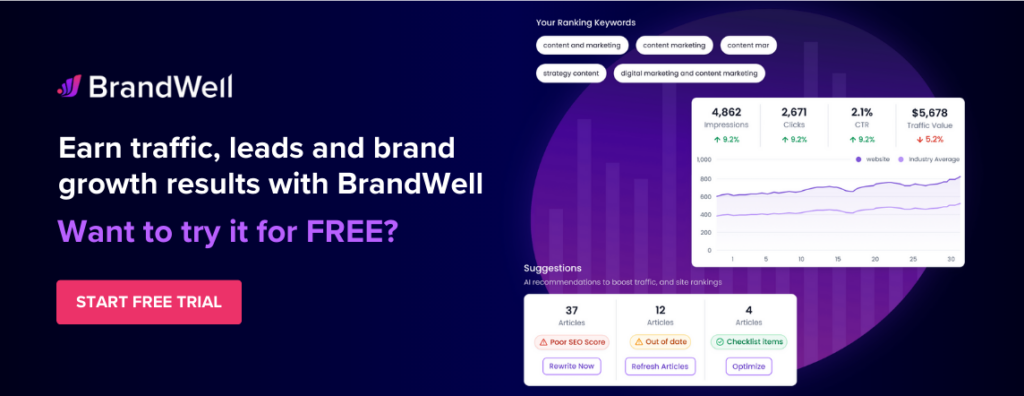Discover top guides, trends, tips and expertise from AIO Writers
What Are the Best Strategies for Tracking Sales Leads?
Jeff Joyce
Monday, 20th Jan 2025Tracking sales leads is the backbone of any successful B2B sales strategy. Studies show that companies that excel at tracking and nurturing leads generate 50% more sales-ready leads at a 33% lower cost. Yet, despite the clear advantages, many sales teams still struggle with effective lead tracking.
A lack of proper tracking can lead to missed opportunities, wasted marketing budgets, and frustration over lost deals. But accurate lead tracking can be complicated, especially with so many channels and touchpoints to monitor. Between capturing information, following up at the right moment, and juggling multiple tools, the process can feel overwhelming.
That’s where a visitor identification tool like TrafficID comes in. This simple website script is designed to simplify the chaos — automatically identifying individual visitors so you can pinpoint exactly which leads to pursue and when.
Keep reading to discover how to streamline your lead tracking and turn qualified leads into customers.
Table Of Contents:
- What is Tracking Sales Leads?
- How to Track Sales Leads
- Tools & Strategies for Tracking Sales Leads
- 10 Tips for Effective Lead Tracking
What is Tracking Sales Leads?
Tracking sales leads is all about keeping tabs on potential customers as they move through your sales funnel. It’s a method that helps you understand where your leads are coming from, what they’re interested in, and how far they are in the buying journey.
Think of it as a GPS for your sales process — you need to know where your prospects are and how to guide them toward a purchase.
Why is Lead Tracking Important?
Lead tracking is more than just getting updates on where your prospects are. Monitoring your leads from their initial interaction to the point of conversion allows you to refine your marketing strategies, focus on what works, and cut what doesn’t.
Here are 5 key reasons why lead tracking is crucial to your sales process:
1. Understand Your Inbound Leads: Tracking sales leads allows you to understand how people find your business and which content or campaigns generate the most interest. Knowing where your leads are coming from allows you to tailor your marketing efforts to meet their needs.
2. Route Leads to Marketing Campaigns: Lead tracking helps you categorize and manage leads based on their engagement and interest levels. Instead of treating all inbound leads the same way, you can segment them and route them into specific marketing campaigns. For instance, if someone downloads an e-book, you can enroll them in a targeted email sequence that nurtures their interest further.
3. Identify Which Marketing Initiatives Convert Best: One of the greatest benefits of lead tracking is the ability to identify which marketing initiatives are delivering the best results. Not all marketing efforts yield the same return — some may generate high traffic but few conversions, while others may lead directly to sales. By tracking your leads, you can see which channels or campaigns are converting the best, helping you allocate your resources and budget more effectively.
4. Improve Lead Nurturing: Lead tracking isn’t just about finding new leads; it’s about guiding them through the entire buyer’s journey. Tracking how leads interact with your business allows you to tailor your nurturing efforts. For example, if a lead frequently visits your pricing page, they may be ready for a sales pitch.
5. Optimize Sales Outreach and Follow-Up: Understanding where a lead is in the sales process helps your sales teams reach out at the right time. If you know when and how often a lead has interacted with your content, you can schedule follow-ups that feel relevant rather than forced.
Learn how to write the perfect follow-up email and get your free template.
Types of Leads to Track
Not all leads are the same, so it’s important to categorize them based on how ready they are to make a purchase. Here are a few common types:
- Marketing Qualified Leads (MQLs): These leads have interacted with your marketing efforts but aren’t quite ready for sales outreach. They might have downloaded an e-book, attended a webinar, or subscribed to your email list. MQLs need nurturing to become sales-ready.
- Sales Qualified Leads (SQLs): These leads have moved beyond the interest phase and are now ready for direct sales contact. They’ve demonstrated a higher intent to buy, making them a priority for your sales team.
- Product Qualified Leads (PQLs): These leads have experienced your product in some way — maybe through a free trial, demo, or freemium version. PQLs have a direct interest in your product’s value, making them strong candidates for conversion.
- Service Qualified Leads (ServQLs): These are existing customers who have expressed interest in additional services or upgrades. They are already familiar with your brand, making them easier to upsell or cross-sell.
What Makes a Good Sales Lead?
A good lead possesses specific characteristics that indicate they are likely to convert into a paying customer. These include:
1. Fit
- The lead matches your target audience based on factors like industry, company size, job role, or geographic location.
- The lead has a clear need or problem that your product or service can solve.
- The lead has the influence or authority to make purchasing decisions.
2. Interest
- The lead has shown they are looking for a solution similar to what you offer.
- They’ve expressed interest in your product or service by responding to ads, signing up for newsletters, or downloading content.
- Their challenges or goals align with the benefits your offering provides.
3. Engagement
- The lead frequently interacts with your brand through website visits, email clicks, or social media engagement.
- They’ve moved from initial awareness to actively engaging with educational or decision-stage content, like case studies or demos.
- They respond to outreach promptly, showing they’re serious about exploring your solution.
4. Budget
- The lead has the budget or funding to afford your product or service.
- They recognize the value your offering brings and are prepared to invest accordingly.
- The lead has a defined timeline for making a decision, indicating urgency and readiness to buy.
By evaluating your leads based on these factors, you can prioritize those that are most likely to convert, maximizing their efficiency and results.
A tool like TrafficID can help you qualify leads based on their profile and website behavior. Unlike most website visitor identification tools, TrafficID goes beyond company-level information and provides you with detailed information on every visitor that lands on your website. From this data, you can gauge their fit, interest, and engagement.
Let me show you how you can use TrafficID for tracking sales leads, step by step.
How to Track Sales Leads
Lead tracking is a systematic process that can be broken down into clear, manageable steps. The goal is simple: to capture leads, collect valuable information, and qualify them for further engagement.
Here’s how lead tracking typically works, step by step:
Step 1: Capture Leads
The first step in lead tracking is gathering contact information from potential customers who have shown interest in your business. Capturing leads can happen through a variety of touchpoints, including:
- Contact Forms: Website visitors fill out forms to request more information, download resources, or subscribe to newsletters.
- Landing Pages: Targeted landing pages with clear calls to action (CTAs) encourage visitors to submit their details.
- Chatbots and Live Chat: Automated chatbots can engage visitors in real-time, collecting contact information based on their queries.
- Social Media: Platforms like LinkedIn and Facebook have lead generation forms that allow you to capture lead information directly.
At this stage, TrafficID can play a crucial role by automatically capturing lead information from your website visitors, even if they don’t fill out your contact form — making sure that you don’t miss out on any potential prospects.
Step 2: Collect Lead Information
Once you’ve captured a lead, the next step is to collect relevant information that can help you determine its potential as a customer. The goal is to gather insights that will inform your marketing and sales strategies. This information might include:
- Demographics: Basic details like name, email address, job title, and company size.
- Behavioral Data: How leads interact with your website, emails, social media, or other digital assets.
- Interest Indicators: What products or services they’re interested in (based on their browsing history).
The more data you collect, the more accurately you can assess each lead’s interest and fit. TrafficID streamlines this process by providing you with a comprehensive view of each prospect’s behavior and engagement history.
When you install the TrafficID script on your website, you’ll automatically see every visitor who lands on your website — including their name, email, phone number, location, and even LinkedIn account.
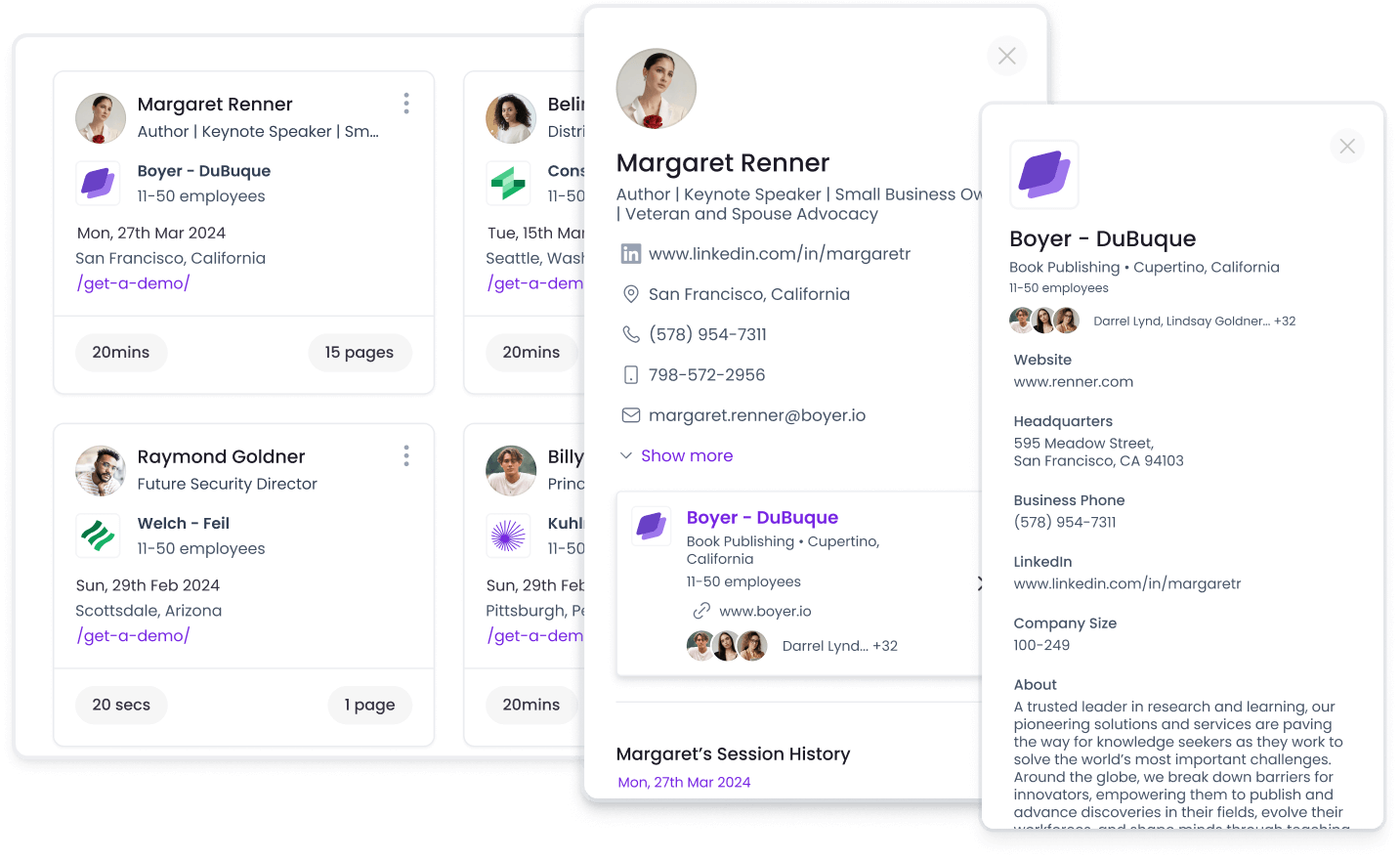
Beyond this basic information, the TrafficID lead profile will also include company-level data such as company name, address, company size, company description, and even how many people from the same company looked at your offerings.
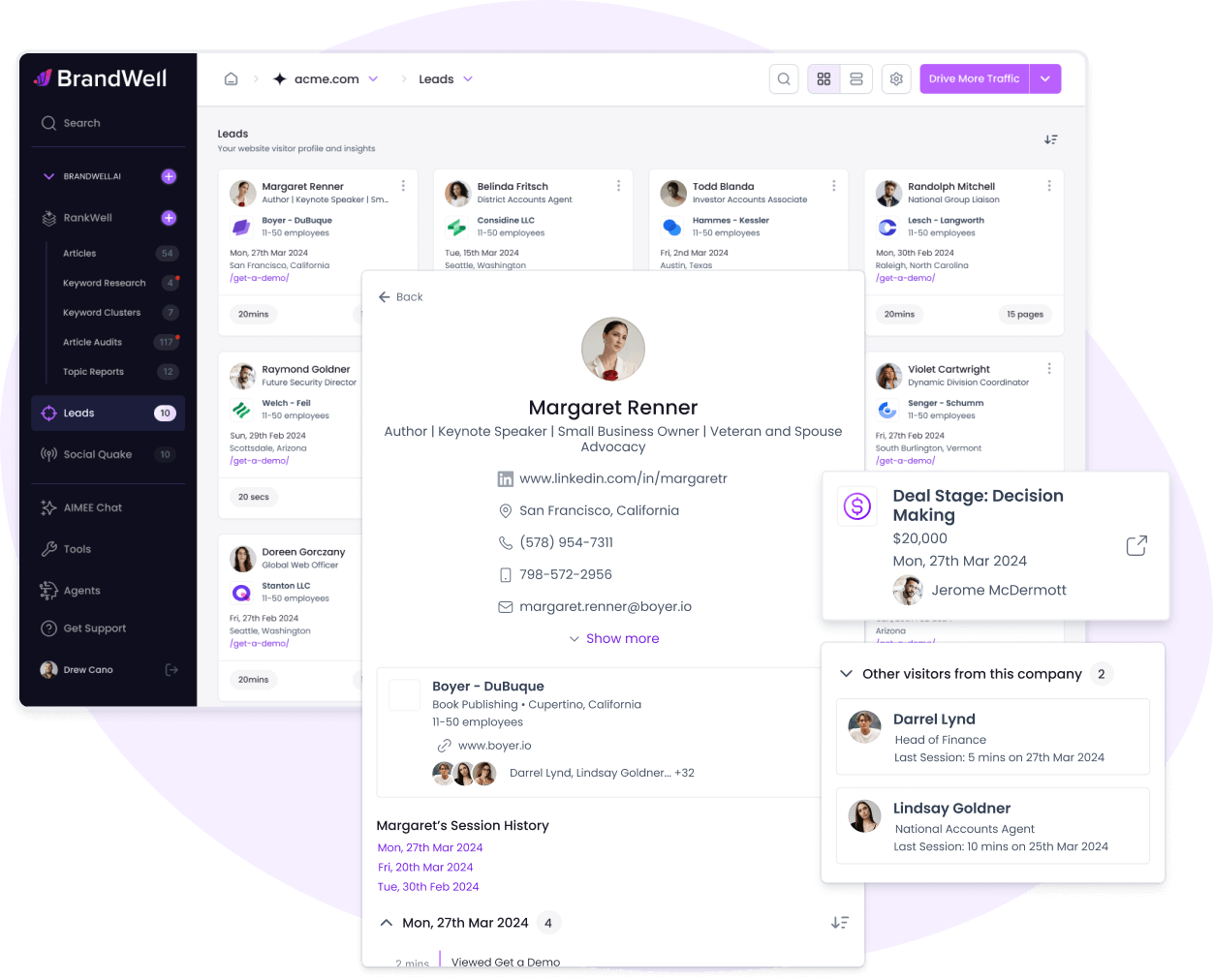
Here’s what makes TrafficID truly special: it will show you how the lead engages with your content — how many times they visited, which pages they scrolled, and how long they stayed on each page.
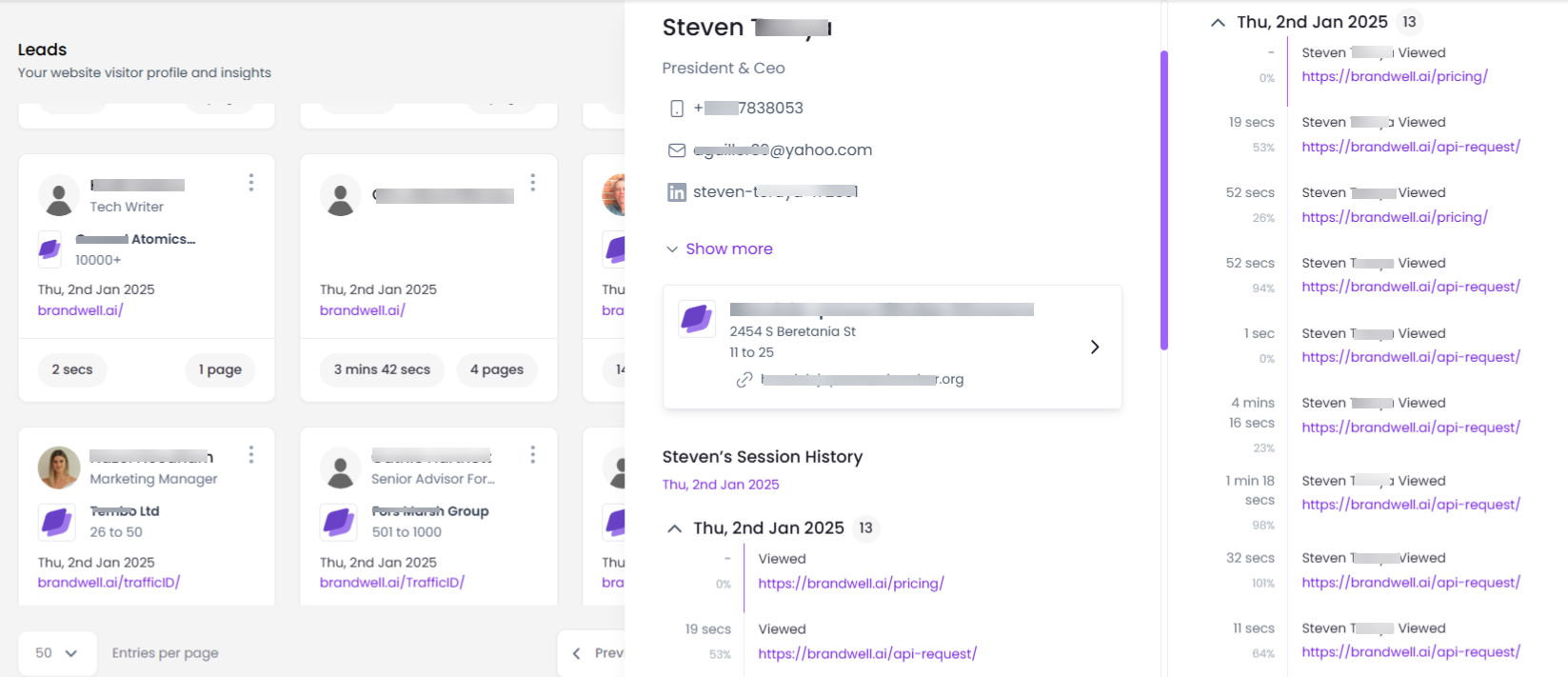
TrafficID aims to provide extensive data on anonymous leads, doing much of the work automatically without requiring manual input.
Watch how we generated 1,691 fresh leads in just two weeks with TrafficID:
Step 3: Qualify Leads
Not every lead is created equal. Some are ready to buy, some need a little more nudging, and some are just not worth your time. This is why learning how to qualify sales leads is important.
Here are some ways to qualify leads:
- Lead Scoring: Assign numerical scores based on factors like company size, budget, industry, engagement level, and more. This helps prioritize leads that are most likely to convert.
- Segmentation: Categorize leads into groups based on similar characteristics such as demographics, behavior, or position in the sales funnel.
- ICP Matching: Compare each lead to your Ideal Customer Profile (ICP) to see how closely they match your target audience.
Qualifying leads ensures that your sales team focuses on high-potential prospects, saving time and increasing efficiency.
To dive deeper into the lead qualification process and discover specific frameworks you can use, check out our comprehensive guide on lead qualification for more detailed insights.
Step 4: Track Lead Behavior and Engagement
Lead tracking doesn’t stop at capturing and qualifying. Monitoring a lead’s behavior and engagement over time is essential to understanding their readiness to buy. This includes:
- Website Visits: Track how often a lead visits your site and which pages they view.
- Email Interactions: Monitor open rates, click-through rates, and replies to gauge interest.
- Content Downloads: Keep tabs on which content they download and how frequently.
- Social Media Engagement: Track interactions on platforms like LinkedIn or Twitter to identify potential interest in your product or service.
On the TrafficID screenshot below, you can see that this particular lead visited our website six times in December, showing interest in the TrafficID tool as well as BrandWell offerings for agencies. This data is vital for lead nurturing as it helps tailor communication based on the lead’s activity and stage in the sales cycle.
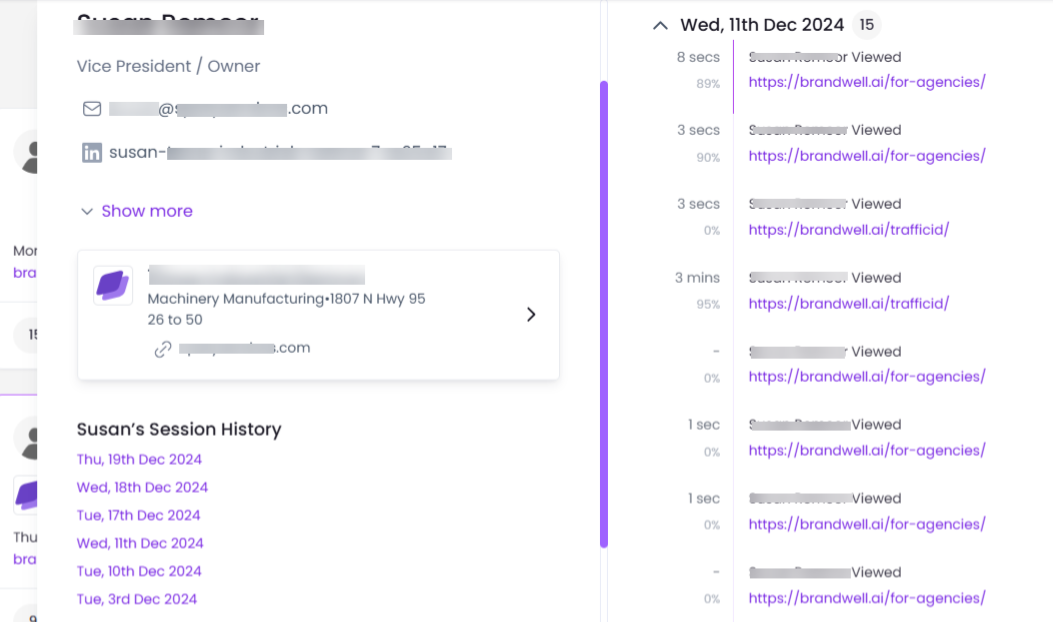
Step 5: Analyze and Optimize
Effective lead tracking includes regularly analyzing the data you collect and optimizing your strategy based on what you learn. This involves:
- Evaluating Conversion Rates: Track how many leads move from one stage of the funnel to the next.
- Attribution Analysis: Determine which sources, campaigns, or content pieces are driving the most qualified leads.
- Sales Cycle Insights: Understand the average time it takes to convert a lead into a customer and identify bottlenecks.
By continually analyzing your lead tracking data, you can fine-tune your approach to maximize conversions.
Step 6: Lead Nurturing and Follow-Up
The final part of lead tracking is nurturing and follow-up. Based on the insights you gather, you can implement personalized follow-ups that address the lead’s specific interests, pain points, and stage in the sales cycle. Effective follow-up may include:
- Targeted Emails: Sending emails that are relevant to the lead’s interests or past interactions.
- Educational Content: Providing case studies, whitepapers, or webinars that address their unique challenges.
- Direct Outreach: Reaching out with a phone call or personalized LinkedIn message when a lead shows strong buying signals.
Using data from TrafficID, you can automate lead nurturing sequences and create follow-up tasks based on triggers like high engagement or specific actions taken by the lead.
Learn how to build an effective sales outreach cadence using TrafficID’s visitor insights.
Tools & Strategies for Tracking Sales Leads
Tracking sales leads effectively requires a mix of strategies, tools, and consistent follow-up. The right approach will help you manage your leads from their first interaction to the final sale.
Below are some of the most effective ways to track your leads:
1. Google Analytics (GA)
Google Analytics is a powerful, free tool that can provide insights into how leads interact with your website. By setting up goals and conversion tracking, you can monitor which pages attract the most leads and which sources drive traffic to your site. For example, you might notice that a particular blog post generates a lot of traffic from LinkedIn, helping you identify a high-performing lead source.
💡 Pro Tip: You can use GA alongside TrafficID, which is a tool that tracks individual visitors, not just traffic numbers. By deeply understanding the leads on your site, you can deliver more targeted outreach messaging and establish rapport more quickly.
2. Sales Lead Spreadsheet
While spreadsheets are basic, they can be a simple way to track leads, especially for small businesses or startups. Create a lead-tracking spreadsheet with columns for contact information, lead source, stage in the sales process, and next follow-up action.
For example, you might have a Google Sheets template that allows your team to quickly update lead status, making it accessible and easy to collaborate.
3. Email Tracking
Email tracking tools allow you to see if leads have opened your emails, clicked on links, or engaged with attachments. This kind of insight helps you gauge their interest and tailor follow-up communication.
For instance, if a lead opens an email multiple times and clicks on a product link, it’s a clear signal that they’re considering your offering. Tools like HubSpot or Mailchimp provide built-in email tracking.
4. CRM Software
CRM software is the go-to tool for tracking leads at every stage. It centralizes all lead information, tracks interactions, and sets reminders for follow-ups. Popular CRMs like Salesforce, HubSpot, or Zoho help automate tasks like sending emails, setting appointments, and scoring leads based on their behavior.
💡 Pro Tip: TrafficID seamlessly integrates with leading CRM platforms such as WordPress, Wix, Shopify, Webflow, and Magento, automatically enriching lead data and providing your team with a comprehensive view of each prospect’s activity.
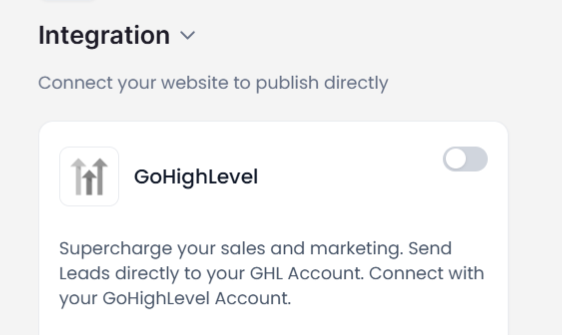
Visit our help center for step-by-step instructions on how to integrate TrafficID into your CRM systems and custom-coded websites.
5. Conduct Follow-Ups
Tracking your follow-up interactions is crucial to keeping leads engaged. This involves scheduling follow-up calls, sending thank-you emails, and sharing additional resources. A CRM can help you stay organized by setting automated reminders for follow-up tasks.
For instance, if TrafficID shows you that a lead showed interest during a webinar, scheduling a follow-up call a week later can help maintain momentum.
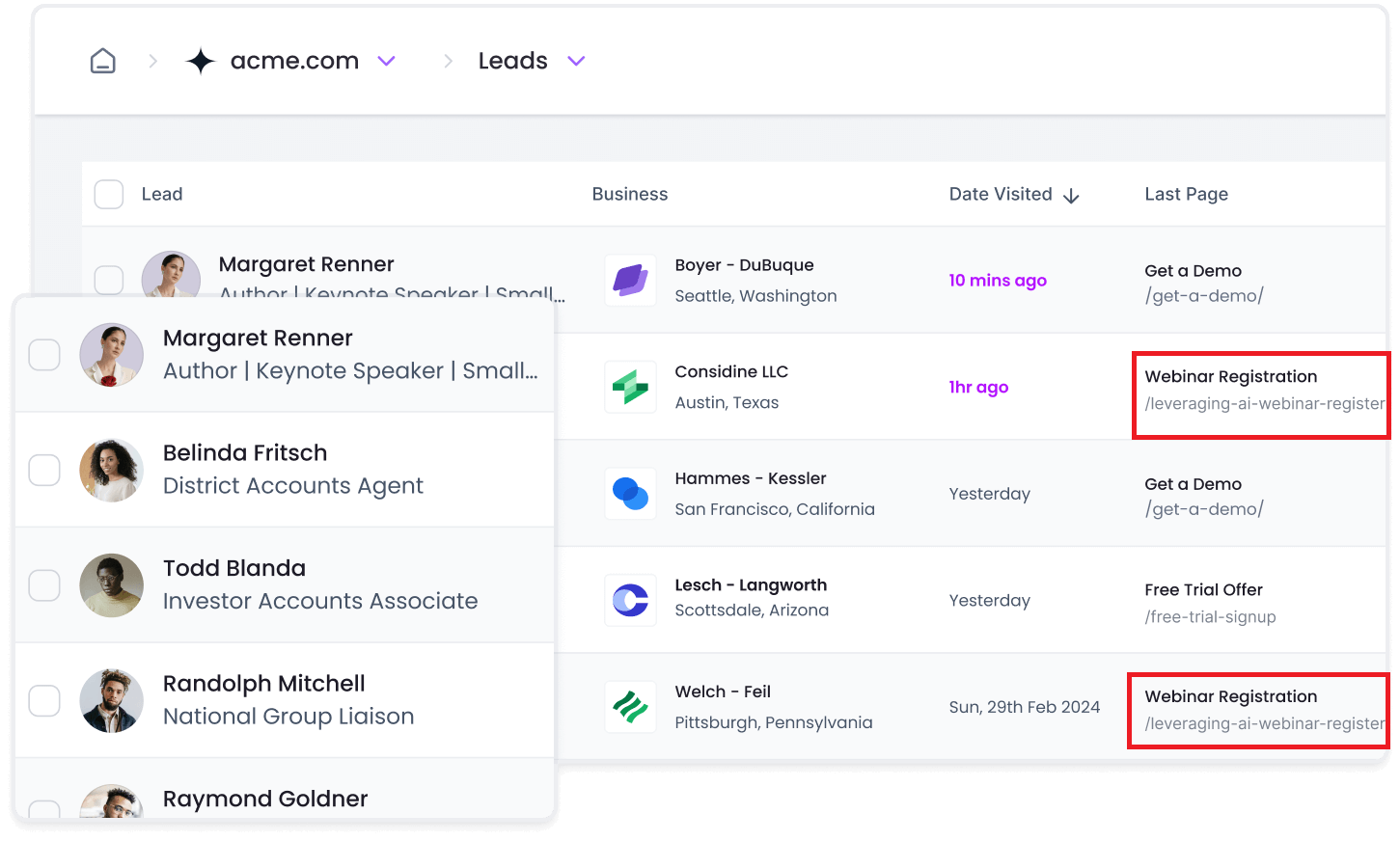
6. Sales Activity Monitoring
Sales activity monitoring tracks your team’s efforts in engaging leads. It covers phone calls, emails, meetings, and other sales activities. Monitoring these activities ensures your team remains consistent in their outreach efforts, and helps you evaluate which approaches are most effective.
For example, tracking the number of calls made per week can show if there’s a correlation between call volume and closed deals.
Tracking your sales leads requires a strategic mix of tools, consistency, and a good understanding of your target audience. With the right setup, you can keep track of your leads’ movements, identify hot prospects, and maximize your sales potential.
10 Tips for Effective Lead Tracking
Tracking sales leads effectively is about more than just gathering data — it’s about using that data to drive smarter sales decisions. Here are some key tips to ensure your lead tracking efforts are as effective as possible:
1. Consider Your Budget
Before diving into complex tracking solutions, assess your budget. Some companies opt for high-end CRM tools with advanced features, while others start with simpler, cost-effective solutions like Google Sheets or basic email tracking tools. The key is to choose a solution that aligns with your resources while still providing value.
If you want a robust, budget-friendly solution, TrafficID is a great choice. It provides high-quality tracking and lead management features at an affordable price, offering great value for sales teams of all sizes.
If you sign up for TrafficID today, you can identify an unlimited number of leads for 7 days at zero cost. Then once your trial period is up, you can select the best package that meets your needs.
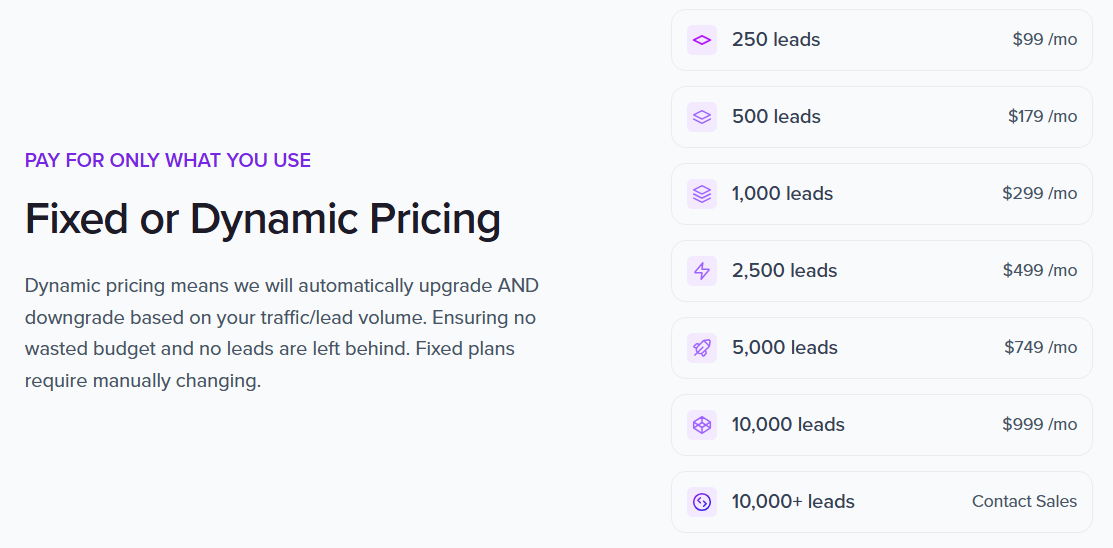
2. Set a Lead Quota Per Month
Set realistic goals for how many leads you want to generate and track each month. Establishing a lead quota helps you measure performance, set benchmarks, and determine if you’re hitting your sales targets. Monitoring the volume of leads you capture allows you to adjust strategies accordingly, whether you need to focus more on inbound marketing or increase your outbound efforts.
For instance, if your goal is 100 qualified leads a month, and you’re falling short, you might consider ramping up content marketing efforts or investing in targeted ads.
3. Consider The Size of Your Team
The size of your sales and marketing team will influence your lead tracking strategy. Larger teams might need more sophisticated tools to manage communication and follow-ups, while smaller teams can often get by with simpler systems.
For example, a small team might use a simple CRM to track leads, while a larger organization might need a comprehensive solution with task automation and advanced analytics.
4. Automate Where Possible
Automating lead tracking can save your sales team valuable time and improve data accuracy. Utilize tools that automatically capture lead data from your website, email campaigns, and other digital channels. Automation ensures you don’t miss any valuable information and frees up your team to focus on personal interactions.
For instance, if a visitor fills out a form on your website, an automated system can log that data directly into your CRM, categorize the lead, and assign a sales rep.
TrafficID excels in automation — capturing visitor information and syncing data with your CRM, all without manual input.
5. Monitor Lead Sources and Attribution
Track where your leads are coming from — whether it’s organic search, paid ads, social media, referrals, or email campaigns. Knowing which sources are the most effective helps you allocate marketing spending more wisely and focus on what’s working.
For example, if you find that leads from LinkedIn ads are more likely to convert, you can boost your budget for those campaigns while reducing spend on less effective channels.
6. Prioritize High-Quality Leads with Lead Scoring
Use a lead scoring system to prioritize your leads based on their engagement level and ICP fit. This helps you focus on the prospects most likely to convert, saving time and resources. High-quality leads might be those who engage with specific content, visit pricing pages, or interact with emails.
7. Keep Communication Consistent
Maintain consistent communication with your leads throughout the sales funnel. Use email automation tools to follow up, share relevant content, and keep your brand top-of-mind. Regular touchpoints help nurture leads and move them closer to making a decision.
For example, you might set up a drip email campaign that sends targeted content based on the lead’s past interactions with your website.
8. Analyze and Adjust Regularly
Your lead tracking strategy should be flexible. Regularly analyze your data to see what’s working and what’s not. Are certain campaigns underperforming? Are you getting fewer high-quality leads from a specific source? Use this information to tweak your approach.
For instance, if your analytics show a dip in conversions from organic traffic, it might be time to reassess your content strategy.
By following these tips, you’ll be able to streamline your lead tracking process, focus on the right prospects, and ultimately drive more sales.
Elevate Your Sales Game with TrafficID
TrafficID isn’t just another visitor identification software — it’s a comprehensive solution that empowers your sales team with actionable insights, smart automation, and seamless integration. By automating lead capture and helping you identify the best opportunities, TrafficID enables your sales team to work more efficiently and close deals faster.
If you’re serious about growing your business, improving lead quality, and maximizing sales success, TrafficID is the tool that can take your lead tracking efforts to the next level. It’s a solution designed to make finding, capturing, and tracking leads a simple and effective process, allowing you to focus on closing deals and driving revenue.

UNLOCK YOUR POTENTIAL
Long Headline that highlights Value Proposition of Lead Magnet
Grab a front row seat to our video masterclasses, interviews, case studies, tutorials, and guides.

